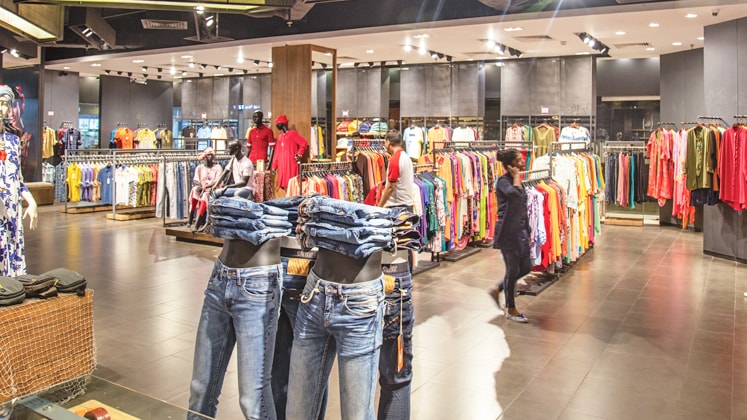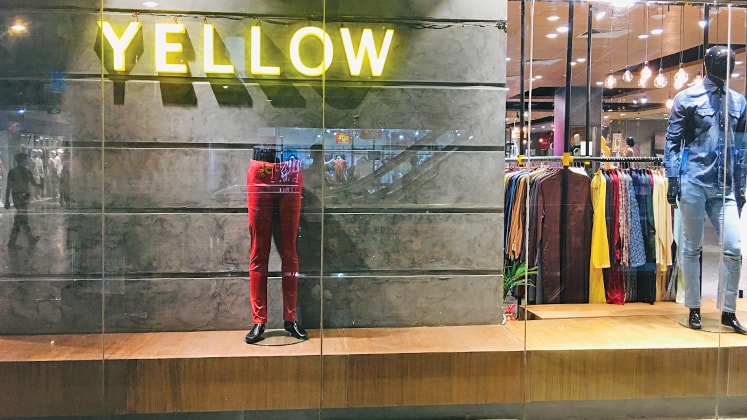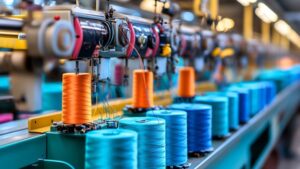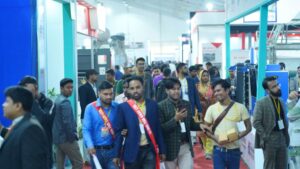
OCode, Amber Lifestyle, Sara, Rise, Smartex, Sailor, Yellow… Do these names ring any bell? Yes, all these are the domestic labels/brands in Bangladesh’s burgeoning fashion retail segment. And one more thread that binds them is that they all are offshoots of the who’s who of the country’s garment manufacturing industry.
Yellow is from Beximco, Smartex belongs to Giant Group, Rise (Standard Group), Sailor (Epyllion Group), SaRa (Snowtex Group), Smartex (SM Group), Amber (Lifestyle Amber Group) and OCode from the house of Energypac.
One might wonder why would one venture into retail when the country’s core strength is in manufacturing. The answer to this lies in what the experts say the rapid economic development of Bangladesh and the increased spending power of its people that has given rise to an equally promising retail sector.
The current scenario – Exploring opportunities
Expected to become a middle-income country by 2021, the growing economic prowess of the country and increasing spending power of its citizens, seem to have turned Bangladesh into an exciting retail proposition for many big names.
Early days as it is, garment manufacturers who are well-equipped with the retail knowhow – thanks to global buyers/retailers that they have been catering to for ages – are taking a plunge in retail to be in a position of strength to capitalise on the opportunities as the market grows and matures. However, they are not alone in this. Global retail biggies have already smelled the blood and are slowly but steadily trickling in to heat up the competition. If players like Decathlon and Puma are here to make the most of the increasing health-conscious populace by offering their latest in sportswear, names like Uniqlo that entered Bangladesh long back holding the hands of the Grameen Group, some are of those early birds in the fashion retail sector, who are now well set to reap the dividends having established themselves strongly over the years. Many others are waiting in the wings to make their presence felt!
“Bangladesh has a rapidly growing sport culture and is a strategically important market for us to be in. We are excited to establish our presence in this country, in the heart of its capital. This being one of the biggest Puma stores in South East Asia, is a testimony of our commitment to all the professional and aspiring athletes here,” said Abhishek Ganguly, Managing Director, Puma India, at the launch of Puma’s first store in Dhaka not long back. On the other hand, Deepak Dsouza, Country Manager, Decathlon, Bangladesh, maintained, “The Bangladesh sports market is growing quickly and we believe it is the right time to enter the market in order to make sports more accessible, starting with the people of Dhaka.”
As per some estimates, the total market size in retail is around Taka 1,500 crore and the growth rate is around 15 per cent for the last 3-4 years, which is expected to continue well into the coming years that would witness the market grow around 15 times. However, compared to the total retail market, organised retail consists only over 1 per cent. According to Bangladesh Superstores Owners’ Association (BSOA), some 30 companies with over 160 outlets are currently operating across the country, albeit the stores are mostly located in cities and urban areas.
Taking it forward, this time around, Apparel Resources Bangladesh spoke with the stakeholders in the country’s fashion retail space to give you a lowdown on the retail sector from the ground zero. So, let’s hear it out from them.
“Bangladesh has a GDP of US $ 240 billion, growth rate of 7 per cent plus and per capita income of US $ 1,517, coupled with an educated middle-class with high disposable income, which is emerging strongly in Bangladesh. So, I would say, the retail scenario in the country is bullish and on a clear upward trend,” said Sandeep H Golam, Director, Rookies BD Limited.
It may be mentioned here that as of FY ’18, the per capita income in Bangladesh increased by 149.07 per cent in last 10 years, showing remarkable success in all socioeconomic indicators from 2008 to 2017. Further, as per New York-based research firm Wealth-X, Bangladesh will record the third-quickest growth in the number of high-net-worth individuals in the world in next five years.
Rakibul Islam Khan, Managing Director, Pakiza Knit Composite Limited, who launched the brand Pakiza Attire in 2019, too agrees that the recent economic development of the country has a lot to do with the new-found vibrancy in the retail sector. However, he equally attributes another reason for it.
“I personally feel the reason why local retails and multinational brands will flourish now and in the future in Bangladesh is because of the change in the mindset of the people. Previously, people in Bangladesh had a traditional mindset where it was frowned upon if one wore western outfit. Thanks to exposure to western culture through internet and increasing number of globetrotters, westernwear has now become a part of our culture, especially among the youth,” reasoned Rakibul, underlining that sale of westernwear has increased significantly in Bangladesh thereby giving an edge to the multinational and overseas players to benefit from.
Challenges and the way forward
Rosy as it might appear on the surface, all is not hunky-dory within the country’s retail landscape. It also has its own share of challenges and quite a few it seems!
“Compared to other Asian countries, retail is not yet an established segment in Bangladesh,” rued Faheem Mosharraf, CEO, Rise.
As it would have been with any sector that is yet to grow its roots deep and strong, retail in Bangladesh is also plagued by various bottlenecks. Limited market intelligence, weak supply chain management system, skill gap, lack of strategic direction, technology adaptation and policy implication complexity are just to name a few.
“A large part of retail sector is still unorganised and this section is moving slower than one would like towards becoming more organised and streamlined,” pointed out Sandeep of Rookies. Faheem, however, is more concerned about the ‘unhealthy’ competition amongst the players, which has been a trend among the garment makers of the country, vying with one another to grab orders irrespective of the price points.
“I really don’t know how some people afford to sell products at prices which would be at par with the production cost. There are universal price points for every product and one can be off that marginally, but if you cut your prices drastically, that is plain absurd,” said Faheem, advocating forming a regulatory body to rein in this malpractice.
Abdur Rahman, Managing Director, Byzid Apparels Private Limited and buying entity NGF Corporation, who floated his own brand even before the retail hype took Bangladesh by storm only to wind up operations for good, later believed competitive pricing is must to survive and sustain.
“Quality parameters aside, tell me why would one buy a shirt of a local brand if there are globally-renowned labels selling the same product at the same price point?,” questioned Abdur. But given the dwindling retail space in Bangladesh, one has no option but be on the higher side of the price points, if one is to make up for the operational cost while also shelling out for exorbitantly priced retail outlets that are few and far between.
“The biggest challenge continues to be that of high-potential retail locations. Bangladesh is a country with very high population density where land is used for residential purposes mostly leaving very little space for malls and high-street retail. There is also a lot of competition for high-quality retail real estate and it tends to be very expensive,” explained Shehryar Burney, Executive Director, Yellow.
This leaves retailers with little choice but to depend on the virtual space of e-commerce. But here too, drawbacks are many.
“Even though e-commerce is getting popular in Bangladesh, people are more interested in shopping from physical outlets as shopping in Bangladesh is not just about purchasing; it is one of the most popular leisure activities,” explained Rezaul Kabir, Chief Operating Officer, Sailor.

The growth of the e-commerce sector has also been inhibited by low usage of credit and debit cards and the unavailability or restrictions on major online transaction sites. According to industry insiders, e-commerce being a relatively new proposition, consumers still prefer the cash on delivery (COD) option, while on the other hand, the yet-to-gain wide acceptability of various credit/debit cards for online transactions is also a major hindrance.
Even though many banks and financial institutions are working towards popularising the use of plastic currency for online transactions, the not very stringent monitoring processes that often lead to various malpractices, leads authorities to put restrictions on online transactions through cards on and off, which put brakes on e-commerce.
In November last year, the country’s central bank (Bangladesh Bank), in an effort to curb illegitimate online transaction, asked all commercial banks to take online transaction authorisation form (OTAF) from clients for every foreign payment, which created a lot of hassles for the country’s around 15 lakh international card holders.
“I personally feel the reason why local retails and multinational brands will flourish now and in the future in Bangladesh is because of the change in the mindset of the people.” – Rakibul Islam Khan, Managing Director, Pakiza Knit Composite
Despite some challenges that exist at present, stakeholders are unanimous that after manufacturing, retail is the next big thing for Bangladesh and it is here to stay. Further to iron out the issues with the so-called tariff structure on locally-sourced goods by foreign players that has been a bone of contention for many overseas retailers, the Bangladesh Garment Manufacturers and Exporters Association (BGMEA) has stepped in to sort it out.
“Last month, Decathlon Bangladesh officials talked with us seeking duty exemption for products sourced from Bangladesh for this market,” said Rubana Huq, President, BGMEA, who in turn sent a letter to the National Board of Revenue (NBR) seeking duty exemption on 20 per cent products sourced from Bangladesh by the international brands. This will allow them to sell these products at local outlets.
Currently, the brands first bring those products to their warehouses in foreign countries from the Bangladeshi manufacturers after which the outlets of these brands import the products for selling in Bangladesh.






